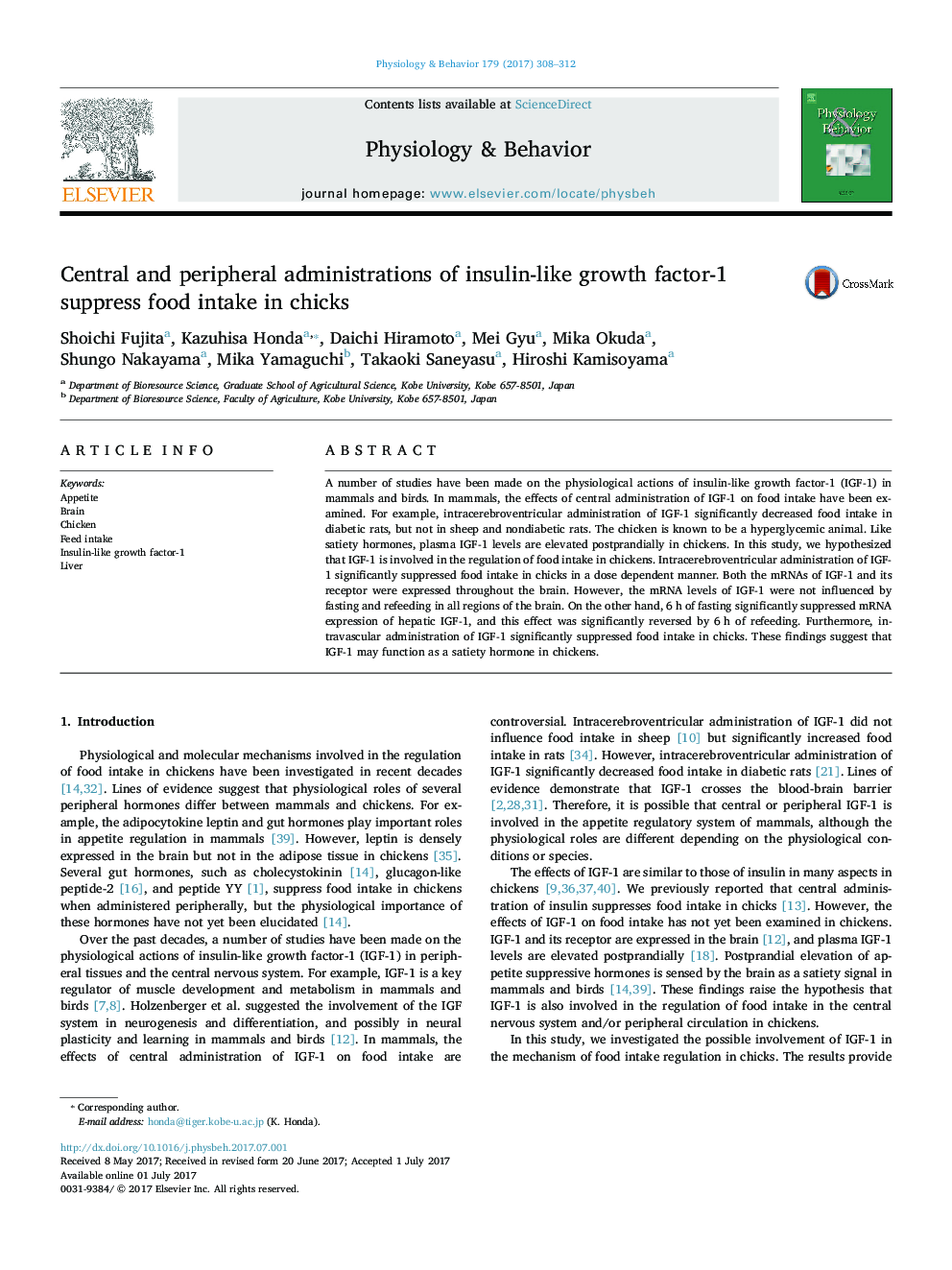| Article ID | Journal | Published Year | Pages | File Type |
|---|---|---|---|---|
| 5593657 | Physiology & Behavior | 2017 | 5 Pages |
Abstract
A number of studies have been made on the physiological actions of insulin-like growth factor-1 (IGF-1) in mammals and birds. In mammals, the effects of central administration of IGF-1 on food intake have been examined. For example, intracerebroventricular administration of IGF-1 significantly decreased food intake in diabetic rats, but not in sheep and nondiabetic rats. The chicken is known to be a hyperglycemic animal. Like satiety hormones, plasma IGF-1 levels are elevated postprandially in chickens. In this study, we hypothesized that IGF-1 is involved in the regulation of food intake in chickens. Intracerebroventricular administration of IGF-1 significantly suppressed food intake in chicks in a dose dependent manner. Both the mRNAs of IGF-1 and its receptor were expressed throughout the brain. However, the mRNA levels of IGF-1 were not influenced by fasting and refeeding in all regions of the brain. On the other hand, 6Â h of fasting significantly suppressed mRNA expression of hepatic IGF-1, and this effect was significantly reversed by 6Â h of refeeding. Furthermore, intravascular administration of IGF-1 significantly suppressed food intake in chicks. These findings suggest that IGF-1 may function as a satiety hormone in chickens.
Related Topics
Life Sciences
Biochemistry, Genetics and Molecular Biology
Physiology
Authors
Shoichi Fujita, Kazuhisa Honda, Daichi Hiramoto, Mei Gyu, Mika Okuda, Shungo Nakayama, Mika Yamaguchi, Takaoki Saneyasu, Hiroshi Kamisoyama,
